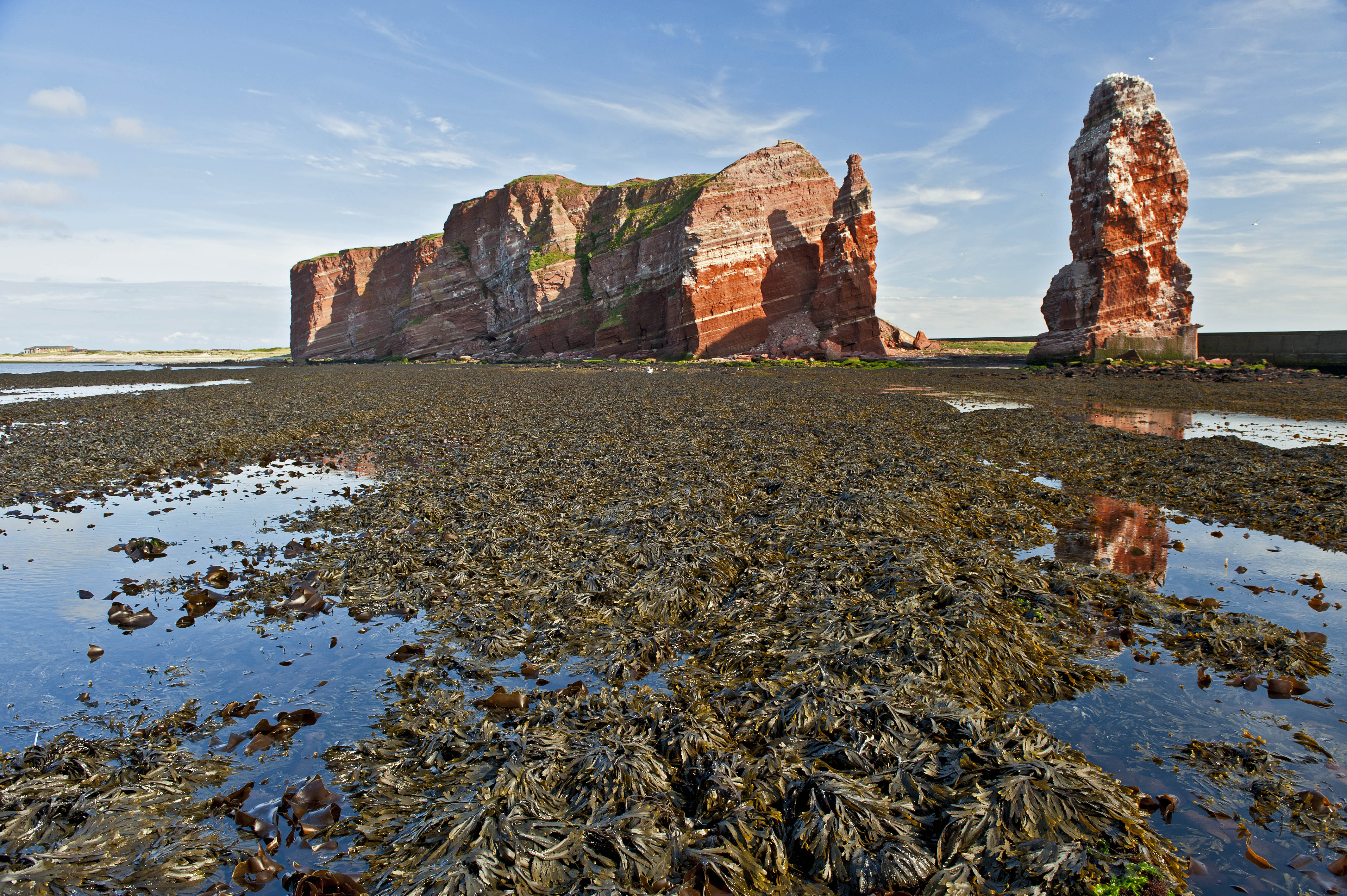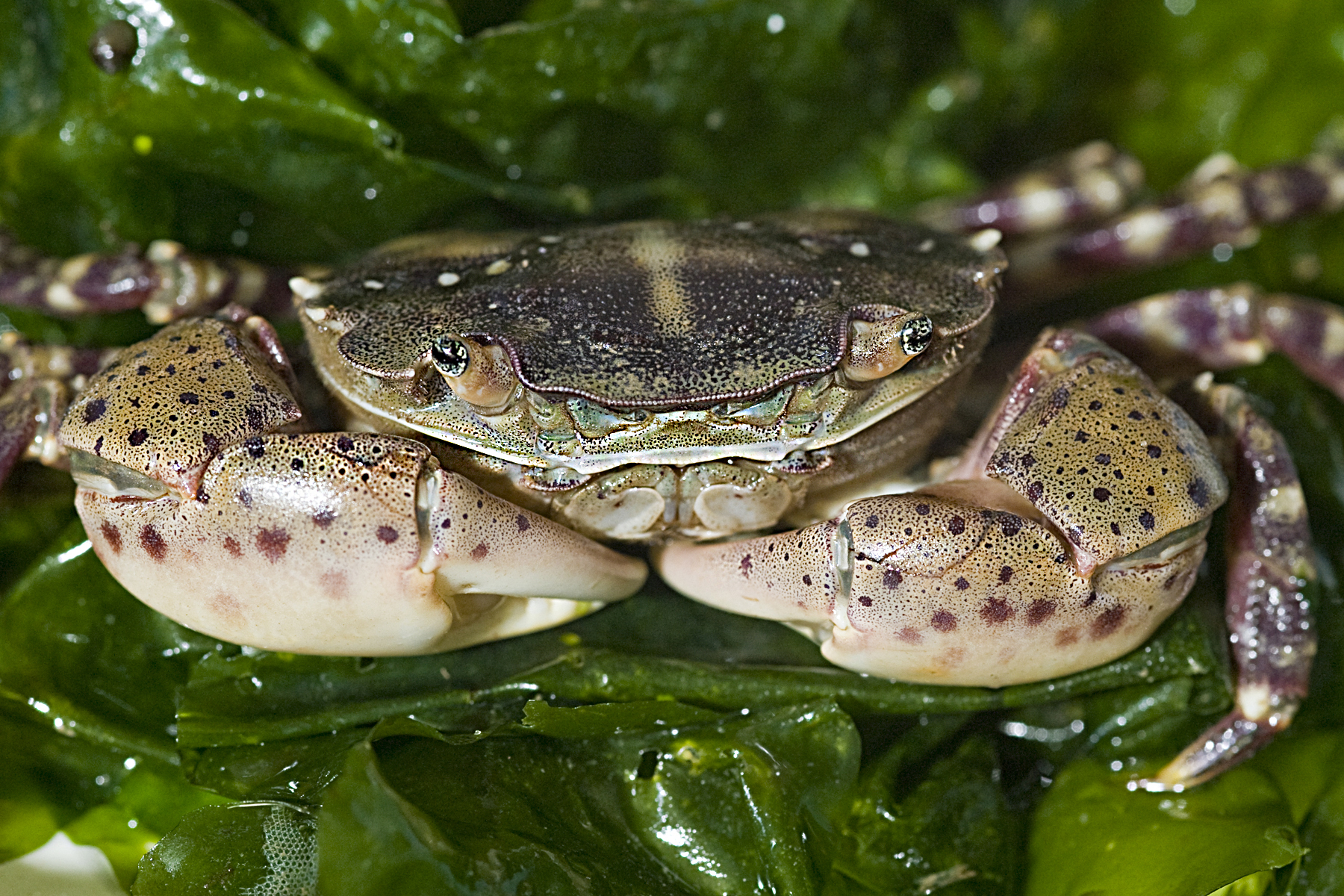Crustaceans dominate the food webs of many costal habitats in our oceans. In addition, as ‘stowaways’ on board of vessels used in global shipping, many crab species have spread far beyond their natural homes. The Asian shore crab Hemigrapsus sanguineus is a good example of these invasive species: in just a few decades this species, native to the Pacific, has spread to many corners of the globe. By the 1980s, it had made its way to the Atlantic coast of North America, and by the 1990s, had gained a foothold in the coastal waters of Europe. In both North America and Northern Europe, this species is spreading farther and farther north, toward the rapidly warming polar waters. In the ecosystems they invade, these crabs can soon reach such high numbers that native species like the European shore crab Carcinus maenas are impacted or displaced. Furthermore, they exert considerable predation pressure in their new homes, often decimating e.g. marine invertebrates like mussels or young shore crabs, and taking these food sources away from other species in the process. This can produce lasting changes to the invaded ecosystems.
But how is climate change influencing the spread of invasive marine species? Invasive species are often characterised by a high tolerance for fluctuations in environmental factors like temperature and salinity, thus being more adapted to the effects of climate change in the oceans. The team of researchers, including members from the Alfred Wegener Institute, Bangor University (Wales, UK) and the University of Greifswald, especially focused on the early developmental stages of the Asian shore crab, and examined its microscopically small larvae, which grow as they float in the water column. Since it has been confirmed that the larvae of many marine organisms are more sensitive to environmental fluctuations than their adult counterparts, these larvae often represent a ‘bottleneck’ in the establishment of new populations.
In addition, the study sought to develop models for predicting the speed at which the Asian shore crab could spread northwards, taking climate warming into account. The project’s main question: Are findings regarding seasonal influences on larval development helpful for such forecasts? In the study, the team began by measuring the larvae’s developmental parameters, e.g. the survival rate and time needed for development at different water temperatures. For this purpose, at the AWI’s facilities on Helgoland they studied the duration of their young developmental stages in the lab; and they investigated the occurrence of crab larvae in the field. With the aid of a mechanistic model, the authors were then able to determine the timeframe during the mating season in which the water temperature needs to be above a certain threshold in order for the larvae to successfully develop into juvenile crabs. This modelling indicates considerable potential for the Asian shore crab to spread farther north, along the coasts of Northern England and Norway.
According to AWI biologist Dr Gabriela Torres and Dr Luis Giménez, a fellow biologist at the AWI and first author: “Our study confirms that, when it comes to predicting the climate-related spread of marine fauna, we need to especially focus on the early stages of development, as they are critical for the settlement on new habitats and the establishment of new permanent populations.” Prof Steffen Harzsch from the University of Greifswald’s Zoological Institute and Museum adds: “The Research Training Group RESPONSE offers us an outstanding platform for scientifically investigating various aspects of climate change, through interdisciplinary collaborations that reach far beyond Greifswald.”
Further Information
This is a joint press release of the Alfred Wegener Institute, Helmholtz Centre for Polar and Marine Research and the University of Greifswald
Original publication
Luis Giménez, Michael Exton, Franziska Spitzner, Rebecca Meth, Ursula Ecker, Simon Jungblut, Steffen Harzsch, Reinhard Saborowski und Gabriela Torres: Exploring larval phenology as predictor for range expansion in an invasive species. Ecography43: 1–12, 2020
http://dx.doi.org/10.1111/ecog.04725
Media Photo
Research Training Group RTG 2010 RESPONSE
Cytology and Evolutionary Biology at the University of Greifswald
Contact at the Alfred Wegener Institute, Helmholtz Centre for Polar and Marine Research
Dr. Luis Giménez
Shelf Sea System Ecology
Ostkaje 1118, 27498 Helgoland
luis.gimenezawide
Tel.: +49(4725)819 3355
Dr. Gabriela Torres
Shelf Sea System Ecology
Ostkaje 1118, 27498 Helgoland
gabriela.torresawide
Tel.: +49(4725)819 3141
Dr. Reinhard Saborowski
Functional Ecology
Am Handelshafen 12, 27570 Bremerhaven
reinhard.saborowskiawide
Tel.: +49(471)4831 2220
Contact at the University of Greifswald
Prof. Dr. Steffen Harzsch
Zoological Institute and Museum
AG Cytology and Evolutionary Biology
Soldmannstrasse 23, 17498 Greifswald
steffen.harzschuni-greifswaldde
Tel.: +49 (0)3834 420 4124


